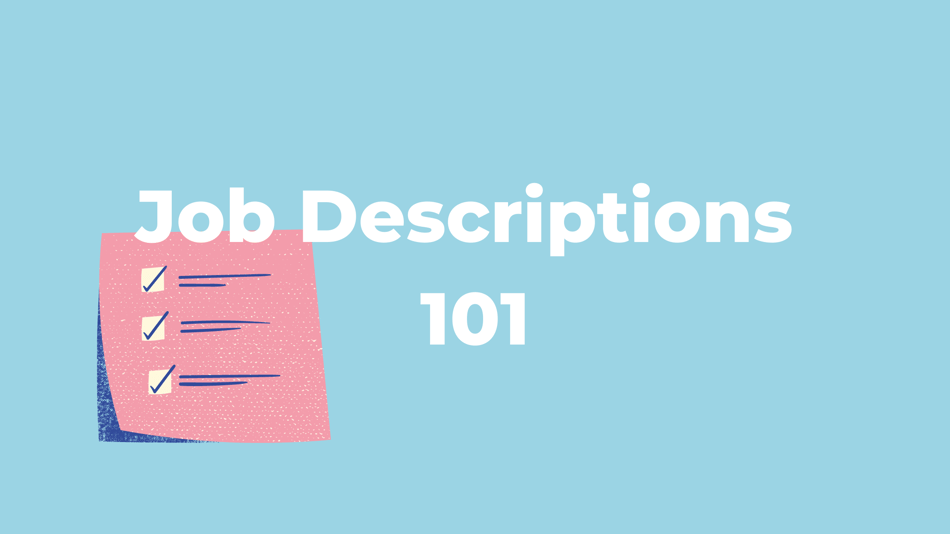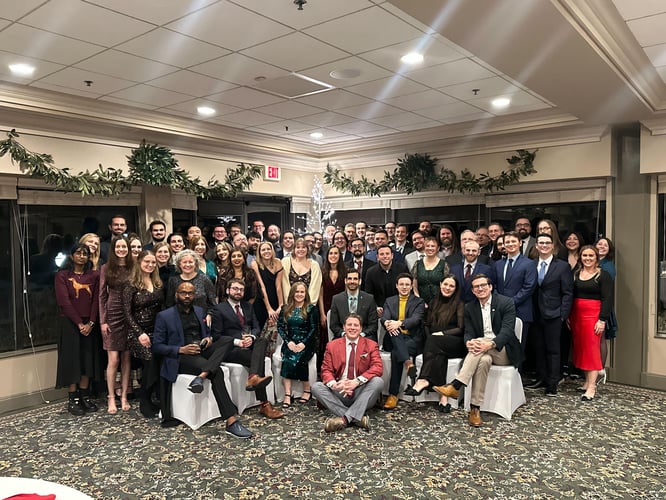“It’s just a job description. It’s not a big deal.”
That’s the first mistake companies make when it comes to writing job descriptions. Because the truth is, hiring the right person starts with a great job description.
When a job description is sloppy, it can deter smart, thorough candidates. They might think that the company is not well put together, credible, or organized. If a job description doesn’t accurately portray a role, candidates will feel blindsided when they interview and get a different picture from what they were expecting. They might feel lied to, or played, which could cause them to lose trust, suspect something fishy is going on, and walk away from the position.
And there’s no avoiding it: if your job description doesn’t attract top talent, your team won’t be as strong as it could be.
Need help hiring? We can pair you with the kind of candidate you’re looking for.
So how do you write a job description that brings in top talent? While there’s no one way to absolutely write a JD, there are some ways to write a great JD. With the help of our friend Brad Voorhees, the VP of People at Blue Wheel and owner of ScaleTX consulting firm, we’re breaking down the do’s and don’ts for you so you can start writing job descriptions that make top candidates want to hit “apply” right away.
How to attract great talent with your job description
1. Ask yourself, “Do I even need a job description?”
Of course, you need something that lets people know you’re hiring—and what kind of candidate you’re looking for and the skills required for the job. But sometimes having a description that acts like a strict guideline for what an employee should (and shouldn’t) be doing, can put employees in boxes and stifle growth—for the employee and the company.
Some employers ditch the description altogether and just detail the responsibilities and expectations of a candidate. It leads to flexibility, individualization, development, self-actualization, and opens the door to finding candidates who will contribute to your culture.
Still want that JD? That’s cool. As long as you’re thinking about how you want your job description to function—not just in hiring candidates, but in finding good employees who bring value to the team and company. And this starts with your company values.
2. Lead With Your Values
At the end of the day, your goal is to find talented, skilled candidates who will help you grow your business. That happens when they feel challenged, excited, engaged, and will want to continue sharing their great ideas with you and your company. (It’s good for retention, too) And the way to do that is through your company values.
First, think about the values your company holds and the type of candidate that can live out these values and contribute to your company growth. Then you can start writing a job description that will help attract the people you want on our team.
.png?width=1650&name=root%20resize%20(1).png)
3. Include the important facts
Start with the basics. Provide important information, like job title, experience level, etc. This might seem like an obvious step, but it’s important to the candidate, so be clear.
You should also include some company information. Candidates don’t want to hear the whole history of the company. They can find that online. They just want to know a little bit about what the company does and what they believe in.
Ready to start building your team? We can help. 
4. Summarize the roles and responsibilities
You don’t need to list every task the person would be doing, but a good summary of the position and goals is helpful.
Brad also said that this is a great opportunity to incorporate company values into the description. He’ll even italicize key company values. It may look like a typo to applicants, but if they do their research, they’ll soon learn that they’re the company values.
When candidates see company values in the job description, it signals to them that the company genuinely cares about finding people who will live out these values. This also begins a broader strategy for finding candidates that will fit your culture.
5. Break Down The Roles And Duties For The First Three Months
Instead of listing all the roles and responsibilities a person would have in a certain position, Brad likes to start with the first couple months, like so:
In the first month, you will . . .
Sharpen your skills in Month 2 by . . .
Execute in Month 3 by . . .
Each role, no matter how experienced the employee, requires training and learning. It helps companies set expectations for what they want in candidates. More importantly though, it shows that the company actually cares about a person’s on-boarding and has a plan for their development. Candidates love to see that companies have a growth plan for them.
.jpg?width=6016&name=christina-wocintechchat-com-vzfgh3RAPzM-unsplash%20(1).jpg)
6. List competencies, not skills
Of course it’s important to include the skills and experience you’re looking for. You don’t want entry-level candidates applying for senior-level positions. That’s a waste of everyone’s time.
But this is where companies usually fall into the trap of limiting candidates—and themselves. It’s really important that in this section, you stay flexible and open to a range of people who have a wide range of skills.
Instead of listing skills x, y, and z, list the competencies related to those skills. This will give people insight into your company culture and help attract self-actualizing candidates that won’t be put off by a narrow description.
7. Forget the free food
Everyone loves knowing about the culture, benefits and perks. For some, benefits are the first thing they look at. For others, they really are just “perks” if the job is right. Either way, they matter to people. So showcase what makes your company special.
But a word to the wise: Culture is so much more than ping-pong tables and free lunches. Those are great things, and yes, people love when companies have them. But what candidates care about when it comes to culture is how they’re treated and set up for success. How leaders lead. The ways in which they can learn new skills. So free cereal is great, but so is autonomy.
8. Use clear, human language
Make the description easy to read. It will help you make sure the candidates that are applying actually understand what they’re applying for. But don’t sound like a robot. We’re all just people here. It’s good to sound like them.
9. Use inclusive language
Diversity and inclusion starts before the candidate even applies. Building a diverse pipeline is important, but having a job description that invites marginalized groups of people to apply is also key. Do not default to "he/him" pronouns and instead use inclusive ones like "they/them."
Statistics show that women tend to avoid applying for a job when they don't meet 100% of the requirement (compared to men who will apply when they meet only 60%). LinkedIn suggests avoiding long lists of requirements in your job descriptions and focusing on performance objectives.
You should also make sure your job descriptions don't include requirements that may be biased against marginalized candidates. For example, if you're looking to hire more diverse developers, Kendra Mitchell, Chief of Staff at Duo Security, recommends reconsidering your 4-year college degree requirement. Many developers who haven't had access to traditional 4-year colleges have learned coding through other ways (i.e., bootcamps). What should be measured is their ability to meet the objectives of the role.
10. Be creative
“Most people don’t think twice about the job description because they’re in a rush to find someone. But it’s a great creative outlet for companies to engage talent. Especially since it’s the first touch point candidates often have with a company,” Brad said.
Show candidates who you are. It’ll help you stand out while also portraying a more authentic representation of your company and team. And if you need a little help, ask for input from your employees. They’re the ones with their boots on the ground working in these roles, or alongside them. Their insight can be crucial.
Get your jobs out there
Now that you have your beautiful job description ready to go, you'll want to post it in places that will help bring in great applicants. Share it with your community, share it internally for hiring from within or getting referrals, or use a job board like Purpose Jobs to access new kinds of talent pools and talent communities. Spread the word and get amazing candidates hitting apply.








.png?width=50&name=Erin%20Gregory%20(1).png)
